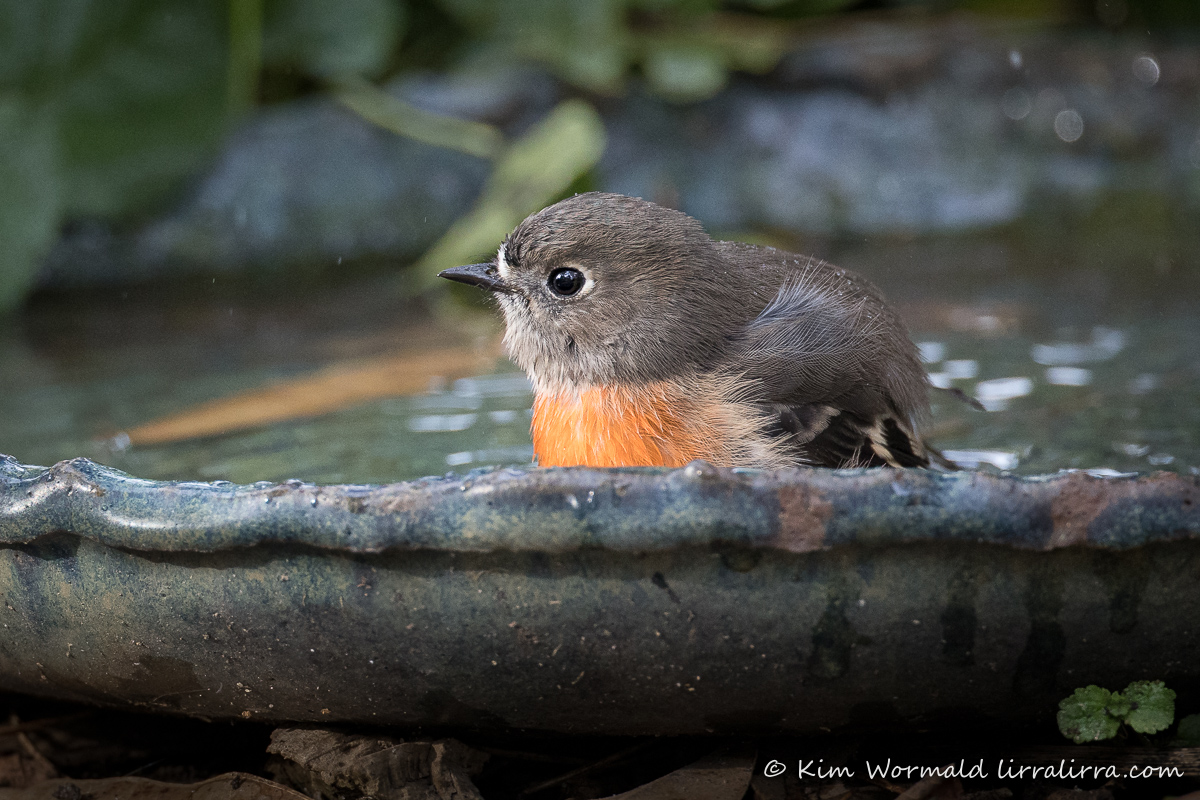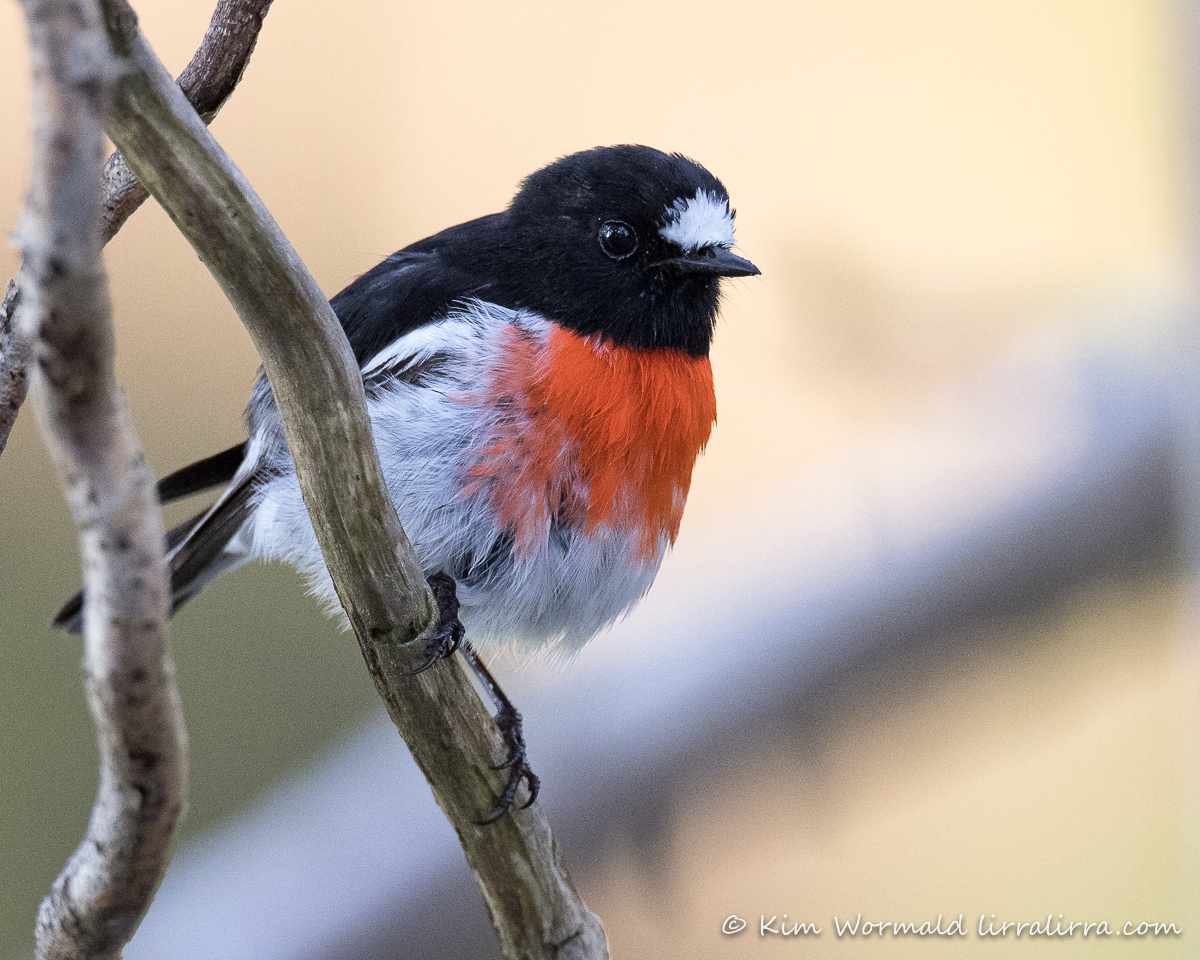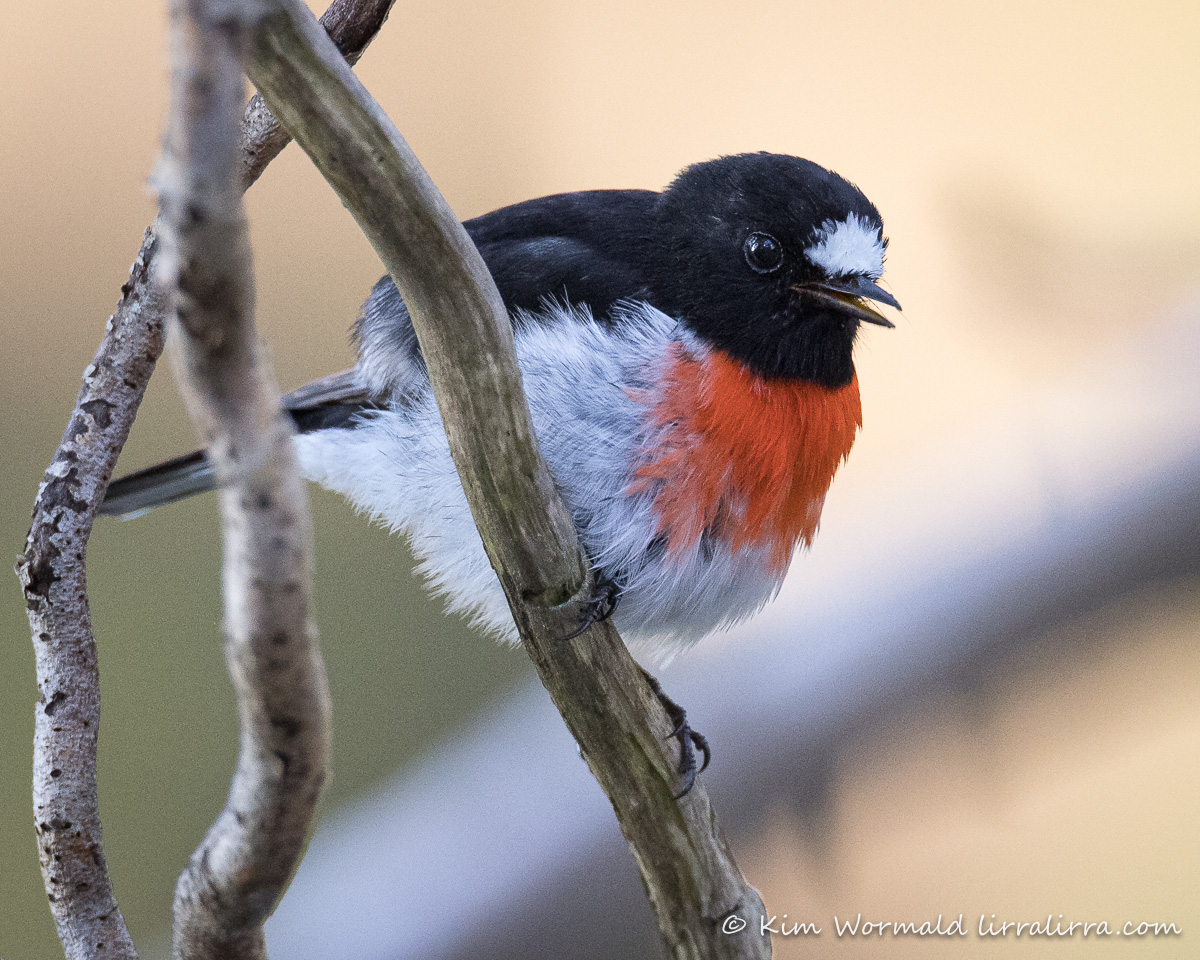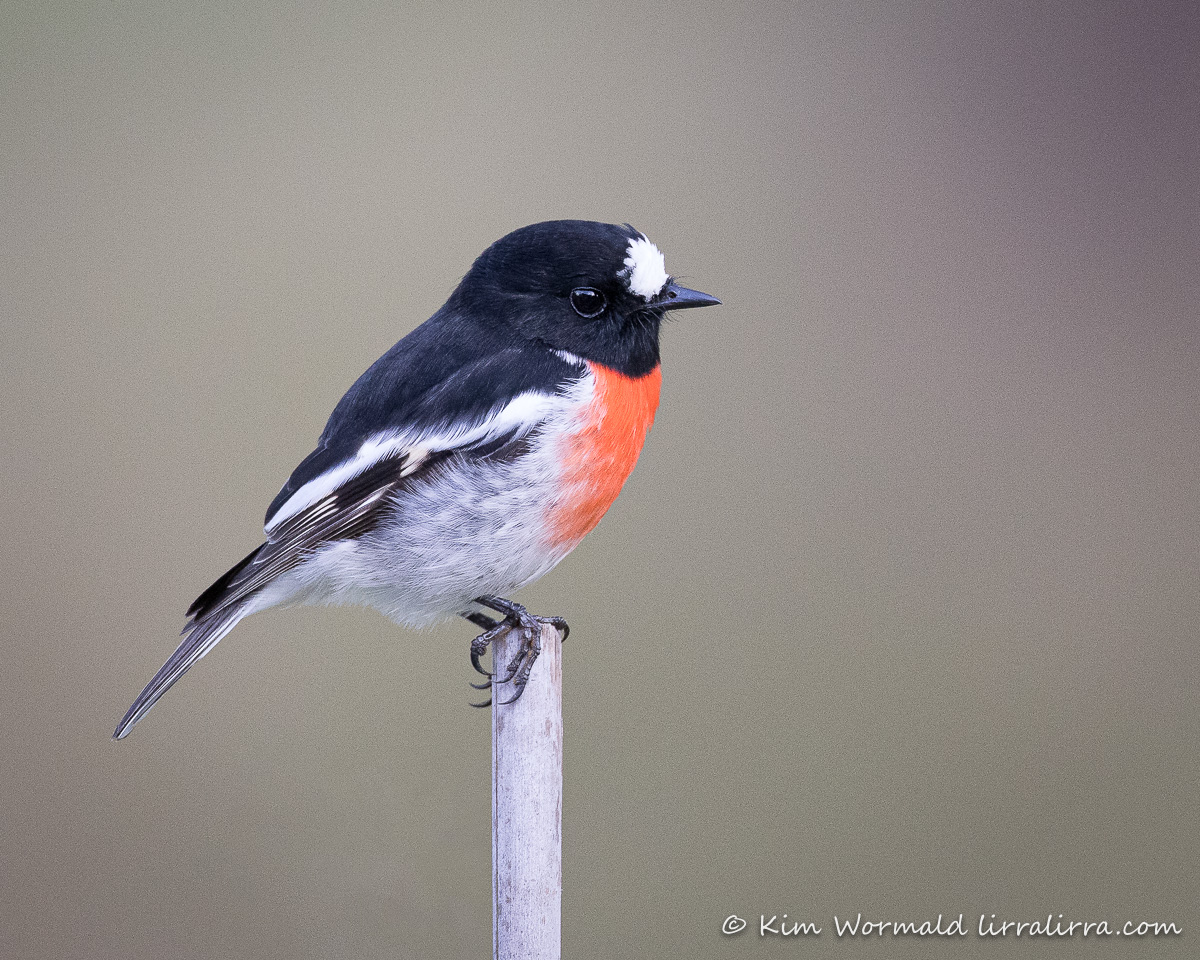Scarlet Robins were my favourite part of winter, for years, then they stopped turning up. Winter after winter I looked out for them, with no luck, until this wonderful week when a female rested, luxuriating, in a birdbath while the male chatted to her from the sidelines.

1/800, f/4.0, ISO 1600
Canon R5, Canon RF 600 f/4 L IS USM
I look out of the window, often. Glancing at my report from primary school shows that it’s not a new habit! Last Sunday I saw a black bird with white tail feathers and wing bars, and knew immediately that the Scarlet Robins were back. I took some terrible photographs through the window, just enough to show a flash of scarlet or a fuzzy blob of scarlet depending on how quickly he was moving. He bathed quickly and was gone. But I kept watching.
And then I saw the female Scarlet Robin in the shallow bird bath that my crazily talented friend made for me. The water is only a couple of centimetres deep and many of the tiny bush birds love to splash in it. I think this is the first time I’ve seen any small bird just sit in it. She’s not much bigger than a golf ball as she sat there, beautifully fluffed up and gazing at my potting table.

1/640, f/4.0, ISO 3200
Canon R5, Canon RF 600 f/4 L IS USM
It was another two days before I saw them again and was able to capture recognisable photographs of the male. There is some speculation that these altitudinal migratory birds suffered badly in the successive bushfires – hopefully their numbers are starting to build again.

1/640, f/4.0, ISO 3200
Canon R5, Canon RF 600 f/4 L IS USM
I was answering a comment on facebook where a birder had mentioned the wonders of bird baths for birds and bird watchers. His comment made me glance outside… and I’m very glad I did. The male Scarlet Robin was above the birdbaths, calling softly to the female.
Scarlet Robins are about 13cm from the tip of their bill to the end of their tail, and they weigh about 13g. I always find myself imagining 5g of sugar in a teaspoon and 60g eggs when I try to understand just how tiny these birds are. The males are striking with their black heads, necks and upper parts, their white underparts and the splash of white on their foreheads, and their striking red bibs. Their wings are barred white and their outer tail feathers are also white. I think the females are just as spectacular with their brownish upper parts, white underparts, tiny frontal white patch and orange-red bibs.

1/500, f/4.0, ISO 3200, handheld
Canon R5, Canon RF 600 f/4 L IS USM
I delightedly wrote to the birdbath commenter about the male robin and skipped (practically) to the door to take my dogs for a walk. As I threw the door open I saw that the male robin had flown to my front garden and was perched on a bamboo stake. I couldn’t believe that he hadn’t flown away. I tiptoed back inside and slowly reopened the door, this time with my camera in my hands. It was quite wonderful to watch him through the lens, and then just sit and wait until he was ready to leave. By which time my dogs were very ready for their walk!
Happy birding, Kim
PS An important PS! On Wednesday night the Weekend Birder went live with an interview Kirsty did with me about empathy and photography. You can listen to it here, and I highly recommend listening to her other interviews too: Weekend Birder – with Kim
~ Prints and gifts Lirralirra Shop
~ Facebook page Kim Wormald – lirralirra
~ Facebook group Ethical Bird Photography

What a wonderful thing it is that these adorable tiny birds are coming to visit your garden.
I am so very lucky Melody. Even as I write there are heaps of little bush birds bathing and it’s only 15 degrees out there, they must be freezing!
How marvelous to have these beautiful little birds visiting your garden, Kim. I am excited this week also because the Gang-gang cockatoos are back feeding on the gum flowers and nuts in the tall trees in our local park as well as having a feast of Manchurian pear fruits which I only know from the large litter of leaves and other tree debris beneath them.
I’ve also had Currawongs visiting my garden and in the local park. I think they found some case moths in the neighbour’s trees next door and may have been feeding on Black Field Crickets at the park because that is what the White-faced Heron was making a good meal of there!
It’s so wonderful to watch the birds in all their different activities, isn’t it? Some pairs of Gang-Gangs were bonding and preening which I always love to see and the park’s resident Magpies warned off the Currawongs repeatedly. So much to see!
What a beautiful comment to read Kim, thank you. It’s fabulous that the Gang-gangs are back, and your other observations are so interesting. There definitely is so much to see! One of my interesting sightings this week has been watching the Red-browed Finches taking grass seeds from the lawn while the fantails hop around them to catch the disturbed insects.